
Flatworms have bilateral symmetry. This means that if a line is drawn down the long axis of a worm's body, the two halves are nearly identical.
- Subject:
- Science
- Provider:
- Utah Education Network
- Author:
- Visual Learning Company
- Date Added:
- 02/28/2010

Resources created or licensed by the Utah Education Network

Flatworms have bilateral symmetry. This means that if a line is drawn down the long axis of a worm's body, the two halves are nearly identical.

Embryology is the study of the development of embryos. By comparing embryological development of different organisms, scientists can identify relationships.
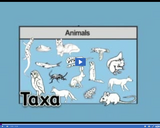
The classification system consists of a system of groups called taxa. Each taxon is a category into which related living things are placed. Taxa exist in a hierarchy, ranging from broad, general categories to narrow, specific categories.

Amoebas have a nucleus and food vacuole. They reproduce by dividing into two new cells.
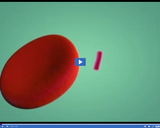
Bacterial cells are smaller than plant or animal cells.

Ciliates, such as this paramecium, use cilia to propel themselves through water.

Euglena are single-celled, plant-like protists that can make food from the sun's energy. They can also act as heterotrophs and obtain food from the environment in the absence of sun.
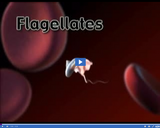
Flagellates are a group of protozoans that move through water by waving a whip-like flagellum back and forth.
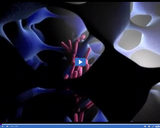
Monerans are microorganisms that consist of a single small cell.

There are three main shapes of monerans: cocci (spherical), bacilli (rod-shaped), and spirilla (spiral-shaped).
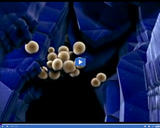
Bacterial cells are referred to as prokaryotes. Prokaryotic cells do not contain a nucleus or other internal structures common in plant or animal cells.

On this episode of UEN Homeroom,Dani and Fernando chat with Airborne Astronomy Ambassadors, Clief Castleton and Milo Maughan. These Utah educators share their STEM teaching experiences that led them to apply to the SETI Institute’s Airborne Astronomy Ambassadors program.

Areas near the equator receive the sun's rays more directly throughout the year, resulting in an overall warmer climate.
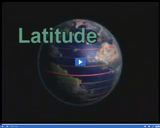
Latitude is the measure of distance north or south of the equator. The equator has a latitude of 0 degrees, and the north and south poles have latitudes of 90 degrees.

Areas near the north pole receive the sun's rays indirectly, causing them to be cooler than areas near the equator.

Clint Stephens, SEDC's trainer-extraordinaire, join UEN's Homeroom to discuss how technology has helped rural teachers improve student learning. We talk about the difference when a teacher is the Science department for the school, what technology tools are helping rural teachers, and how the regional service centers are impacting education in rural Utah.

Make video editing easier using Adobe Creative Cloud Express! In this walkthrough tutorial, you’ll learn how to easily merge two videos and adjust the speed of your clips using the Quick Action Tools.
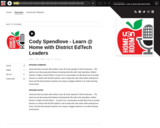
Jared and Dani are back with another Learn @ Home episode of UEN Homeroom. This week we are discussing what distance learning looks like with Cody Spendlove, Edtech Director of Alpine School District. As part of our conversation we talk about how to provide devices to a district with 80,000 students, how to keep kids safe online while working from home, and the best practices teachers are using to engage students in an online learning environment.

Enhance student collaboration with these Nearpod tips! In this episode, host Jami will show you how to utilize Nearpod features to enhance a Think-Pair-Share activity.

In this eMedia Update, explore Open Educational Practice (OEP) with Katie Blunt. We learn how eMedia tools and the OER Collective hub can help you contribute to the eMedia community and participate in building a library of quality Open Educational Resources (OER) for Utah’s educators and learners.